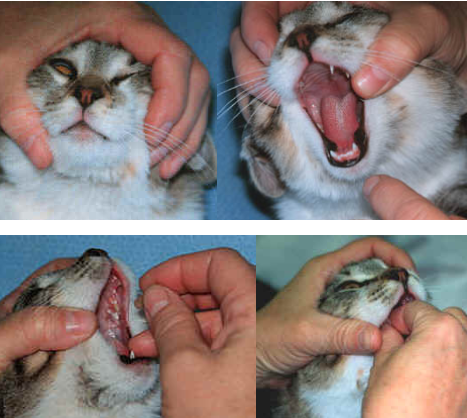How to Medicate Your Cat
Most kitties in their life will need medication, and most kitties don’t tolerate getting medicated very well, and it can be a stressful experience for the Owner and cat. They don’t understand why they are being held and forced into a weird situation. No matter if it is a pill, liquid, subcutaneously, or topically we cannot communicate easily to our kitties why we are doing this to them. Learning to medicate your cats or any pet, will only be beneficial to them in the long run. It is much easier to get them used to it as younger animals than older ones when it may be their life on the line.
The most important role you play in this is being calm, firm, and loving. We don’t want to make our friends uncomfortable, but until we can speak in “meows” we have to do what we have to do for their health. However, we promise you, your cat will forgive you for the 5 minutes of being uncomfortable. Keep that in mind, (with treats at the ready of course), and you may find medicating your cat to not be as scary as their meows make it seem.
Medicating your cat by mouth:
One of the most common medications routes your vet will request of you is by mouth. Medications commonly given orally are pills, liquids, or gels that absorb into your feline’s gums. Some of these can be mixed in with food, but some need a more direct approach.
Pilling your cat is simpler than you might think; first you are going to either grab a friend to help hold your cat’s body or tuck your arm around the body of your feline, putting pressure down with your elbow/bicep on the hips of the cat to prevent backing up. You will then use that arm’s hand to tilt your kitty’s head up. In the other hand hold the pill between your thumb and index finger and place downward pressure with your middle finger on the front of your cat’s lower jaw. This combined with the upward tilt of your cat’s head will cause the cat’s mouth to naturally open a little. Keep your finger over the small incisor teeth and not over the sharp fangs (canine teeth). Drop the pill or capsule as far back over the tongue as possible, then immediately close the mouth. From here hold the cat’s jaw shut. Optionally rub in a downward motion under the cat’s chin to encourage swallowing.
Cat pilling aid, if you are worried about cat bites.
Pill Pockets, yummy treats that help hide medication from your cat.
For liquids you will follow the above process, but when the mouth is open squirt the fluid down the cat’s throat or towards their cheek pocket.
For gels that need to be absorbed through the gums or cheeks, do the same motions as above, just refine your aim to the gum line or inner cheek rather than down the throat. Gels are often flavored since they tend to sit in your kitties mouth a bit longer. Some flavors include, chicken, marshmallow, or fish. Some cats may love these flavors while others will be just as upset as getting any other type.
Medicating your cat SQ (subcutaneously, under the skin):
Doing SQ injections can be a little more difficult, so it is important to remember if you are uncomfortable with needles, have a fractious feline, or feel at any point uncomfortable with the route of administration you can always leave this option to the professionals through scheduled vet visits.
Whether you are doing fluid therapy, or have a medication that requires injections, always record your schedule on a calendar to ensure accuracy and proper timing.
“Your cat may be happy lying or sitting on your lap while you administer the fluid injection. However, you should place a towel or blanket across your lap (to avoid getting scratched) in case your cat tries to jump down. Some cats do better on a smooth surface, such as a table; the top surface of a washing machine can simulate the smooth metal table at your veterinarian’s office, which might encourage your cat to remain still during the procedure. Additionally, some cats do better with two people administering the injection – one person to hold the cat, and the other one to give the injection.”
To give the injection you want to create a “tent” in the skin around the scruff area of the neck. To do this you pinch the skin with your middle finger and thumb, then curl your pointer finger into the pinched skin thus creating a tent. Into the center of the tent, you pierce the skin with the needle and inject the medication or start the fluid therapy session. Veterinarians will give instructions and demonstrations to help make this process go as smoothly as possible in the comfort of your home.
Medicating your cat through topical ointments:
One of the easiest medication options for pet co-pilots is topical ointments. Topicals are absorbed through the skin, though they don’t typically break the blood brain barrier which means topicals typically don’t make it into their blood or through the body, helping with a singular localized issue. On average, there are fewer mental side effects than ones that are swallowed or injected. Most of the time this method is used to treat hyperthyroidism through applying a thin strip of medication to the inner ear and rubbing it in with a glove. To do this, once again make sure you and your cat are comfortable, lightly pull back the ear to expose the inner ear just before the canal, apply the ointment and rub in (most ointments can be transdermal to your skin as well so wear gloves for protection!) This same method can be used for any other exposed outer area of the body.
-
Creams, ointments, and lotions are for external use only. It is important to prevent your cat from licking and swallowing any of these medications, as they may contain ingredients that could be harmful if swallowed. Many veterinary formulations are specially designed for rapid absorption to minimize this problem. Ask your veterinarian about any precautions with your pet’s ointment, cream, or lotion.
The most important thing you can do for your furry friend is to be positive, calm, and kind. Kitties can pick up if you are stressed and will follow your lead. The more freaked out you are to do it, the more they will panic! Being your cat’s support pillar will help you both in the long lives you have ahead together.
References:

